UK Regional Dartboards
Dartboards of the Past and Some of the Present
Most people who watch darts may be forgiven for thinking that this is the only dartboard that has ever existed or is the only dartboard played upon today. Darts and dartboards are steeped in history, and although many of the UK regional dartboards are just consigned to the history books, a few are still made and played upon today.
It is true to say most UK regions had their own version of a dartboard that has been played upon in a public house. The variation can be attributed to the travelling fairground where darts probably entered the UK for the first time.
Although darts as a game originated from the French game 'Fléchettes' (meaning 'small arrow'), many variations of a dartboard have been made. However, only a few survive and are in use today. Below, you will see some dartboards that graced UK bars' pubs, bars and taverns of the past and present.
Yorkshire Dartboard.
Still used today, same directly sat this was the forerunner to the standard dartboard used today. The number system is the same, yet there are no trebles or outer bullseye features.
The Yorkshire Dartboard
The Yorkshire dartboard was also featured on British TV in the first series of 'Indoor League' hosted by Fred Trueman, a former cricketer. Indoor League was a programme that featured pub games, Table skittles, 8,9 ball pools, arm wrestling, bar billiards, and, of course, darts. Sid Waddell was famously involved in the series.
Darts, of course, was the biggest draw. From series two, the standard / London Dartboard was used. Icon's of the Oche, John Lowe, and Eric Bristow are among the dart throwers that took part.
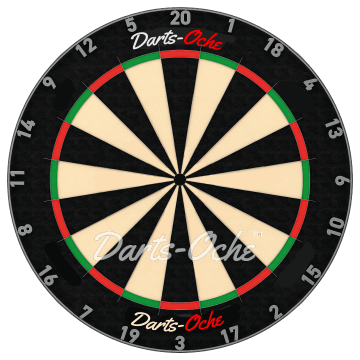
Manchester Dartboard
Still used today, the Manchester Log-end Dartboard, to give its official title, is a dartboard like no other. The playing service measures 10" (254mm) dia and has a number sequence that differs from most of the regional dartboards. As the name suggests, the dartboard is made from a log-end of wood. Today, Poplar/Tulipwood is used to make dartboards. However, up until the 1970s, Elm was the wood of choice.
In the 1970s, the UK was hit with Dutch Elm disease, which wiped out the supply and alternative woods were used.
The Manchester Log-end Dartboard league still survives today, thanks to a couple of local makes. However, the dartboard needs to be kept moist and immersed in water when not in use to heal the dart holes and prevent the dartboard from splitting.
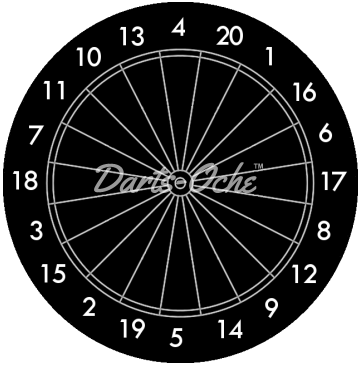
The Lincoln Dartboard
The Lincoln dartboard has gone through change since it was first conceived. The Original dartboard has a playing surface of 15", unlike the modern version of today, 13 ¼".
Like all local dartboards, it requires someone to make the boards, and when supply stops, the dartboards risk being consigned to history. This was true of the Lincoln dartboard. However, the local league, struggling to find a maker, approached the famous Winmau Dartboard Company, which agreed to make a smaller version. Indeed, Winmau, already making the Yorkshire Dartboard of the same design, suggested making the dartboard black as the Original Lincoln dartboard would have been. The smaller size is the same as the Yorkshire and Standard Dartboard. However, a dartboard called the Irish Black had the same dimensions and colour as the new dartboard. Winmau now sells their version as a Lincoln Dartboard, but to the purest of the Lincoln Dartboard and those that honoured the Irish Black, this is not a true Lincoln Dartboard as size has dramatically been reduced.
The game is played in the same way as the Yorkshire Dartboard rules.
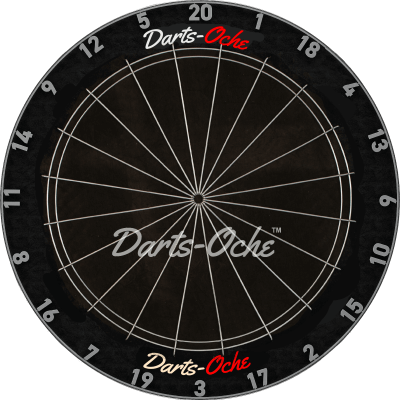
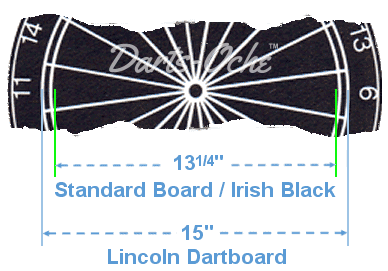
London and Ipswich 5s
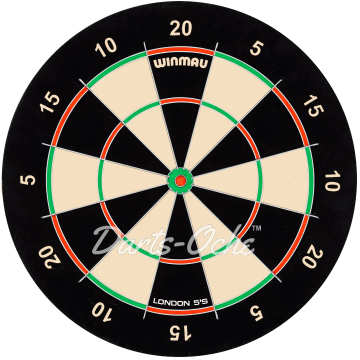
London 5s
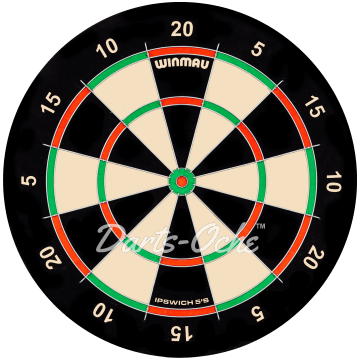
Ipswich 5s
In addition to the above, two 5s dartboards are again named after the regions in which they are played. The London 5s has a narrow double and treble scoring area compared to the Ipswich 5s, which has a standard or large double and treble scoring area. The 5s dartboards are still made. The main game object is 505, played in the same way as 501 on a standard dartboard.
Other UK Regional Dartboards
Several UK dartboards are no longer in use and have not been available for many decades. However, for purposes of this page, here are some dartboards I have digitally reproduced that were part of the UK's history of darts. Each dartboard has been given a name in the region of the UK where the board was used.
Kent (Doubles)
Although the Yorkshire dartboard can still be easily found, the Kent doubles are rarer. However, I believe leagues still exist. The origins of the Kent Doubles stem from the Yorkshire Dartboard. Both dartboards are the same size, although some references say the original Kent dartboard size was bigger than the Yorkshire dartboard. If, however, the Yorkshire miners first brought the dartboard to the Kent Region, I would suggest it was the same size. Both dartboards only feature single, doubles and a centre bullseye, not an outer bull as you see on a London/standard dartboard.
Traditionally, the Yorkshire, Irish Black and Kent, also referred to as the Kent Doubles dartboard, were made from elm/poplar wood. The County of Kent gained its own doubles board when the miners from Yorkshire took their dartboard to the Kent coalfields. Players of the Manchester log-end dartboard would know the numbering system was hammered into the board. It is not much of an issue for a Manchester dartboard because the game is unique and not concentrated on one main high-level scoring section. This is not true of the Yorkshire or Kent boards, so the boards were manufactured without any numbers. The dartboard was then nestled inside a number ring. This allowed the board to be turned so it had even wear. Today, Yorkshire dartboards and London dartboards have a removable number ring, allowing you to reposition the numbers after turning it. The illustration shows the traditional Kent board without numbers in a fixed number ring. Some still survive while some Kent leagues use a Yorkshire dartboard or the NEW Lincoln.
The Kent (Doubles) Dartboard rules are the same as the Yorkshire Dartboard.
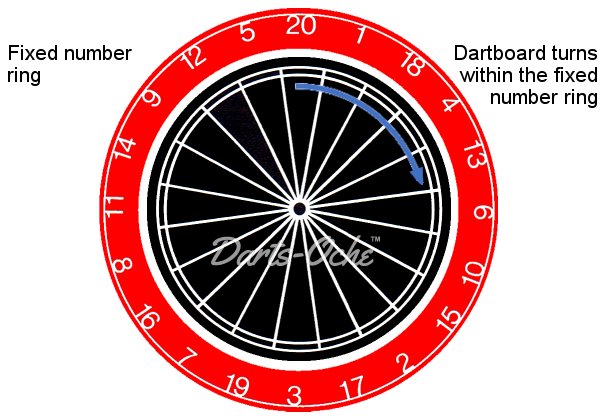
Grimsby Dartboard
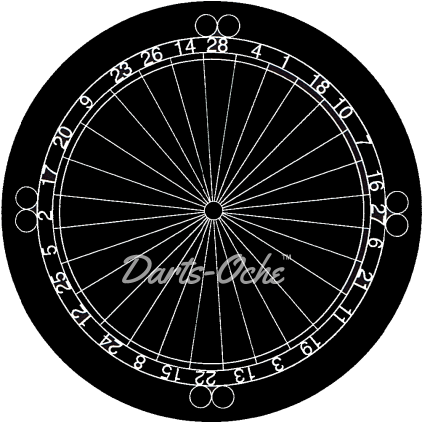
The Grimsby Dartboard is unique in a few ways. Firstly, it has 28 scoring segments, a bull and a doubles ring. In addition and external to the main scoring area are four sets of dual rings at the north, east, south, and west pole positions.
The rules for this board I have been unable to find. However, the dual ring may likely have been used to start and finish a game. i.e. hit one of the target areas to start and or finish. The rings, of course, could have been used for other dart games, and these could have been used as a forerunner of the game loop / loopy (see standard dartboard games).
The dartboard was made circa 1880, and photo evidence shows the board in 1890. The dartboard would have been made from Elm and soaked like other wooden dartboards at the time to make the board playable and to prevent splitting.
This dartboard is sadly no longer made.
Bath Dartboard
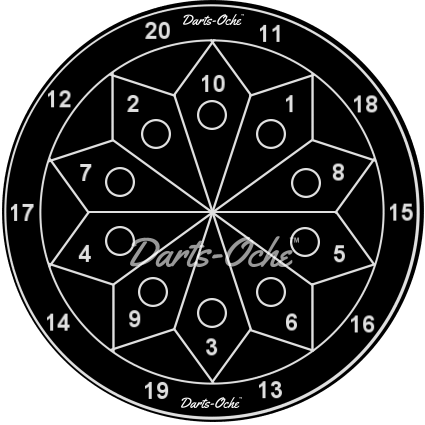
The Bath Dartboard was a feature circa the 1900s. Like other dartboards made at the time, the dartboard was made from a log-end, presumable, 'Elm' or another softwood such as 'Poplar'. Like the Manchester Dartboard and other UK Regional dartboard variations, the dartboard would have had to be kept damp and submerged in water to heal the dart holes that would have been generated. Soaking the wood dartboard would also stop the board from splitting.
Rules for this dartboard have yet to be found. However, darts in the 1900s would have been made from weighted wood with feather flights and not designed to be grouped like modern-day darts. The games likely followed simple rules such as around the clock, hitting each numbered segment in sequence. It is also possible the circle areas in segments 1-20 may have been a higher scoring area, such as treble the segment area value. Similarly, the outer scoring numbers may have been used as the finishing segments, but this is conjecture.
This dartboard is sadly no longer made.
The Stafford / Burton Dartboard
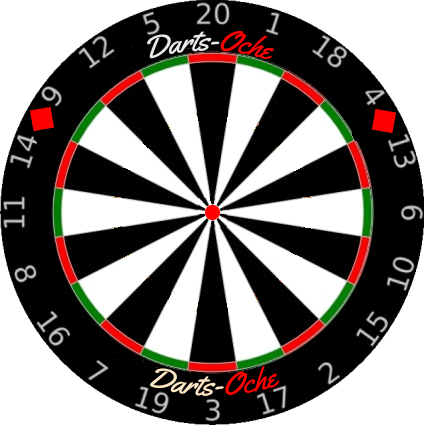
The Stafford / Burton Dartboard as described in the Guinness book of darts by Derek Brown and serval other publications, probably taking their research from such a publication. The Stafford / Burton Dartboard is described as a variation of the Yorkshire dartboard with two additional squares situated between the 14 and 9, the other between 4 and 13. The squares slightly turned scored each scored 25. The board has described also had no treble ring or out-bullseye. The addition of the 25-scoring square could be used to score on but could not be used for an outshot!
This dartboard is sadly no longer made.
The Tunbridge Dartboard
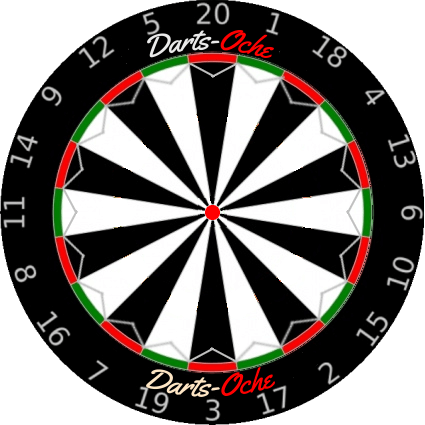
Used in the Tunbridge-Sevenoaks area of Kent, this board also has another name the Trebles board due to its special arrangement. What would typically be a doubles ring on a London Dartboard is a trebles ring on a Tunbridge. The numbering sequence and dimensions are the same as a standard London dartboard. However, this board doesn’t feature an outer-bullseye. The double on this board consists of the triangular segments inside the treble ring which mean you can bust either side of the double!
This dartboard is sadly no longer made.
Norfolk Dartboard
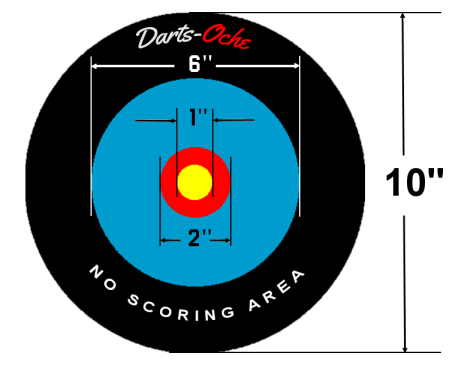
According to Arthur Taylor in his book 'Pub Games ', this small target boat was used in parts of Norfolk up until the 1940s. The dartboard was made from Elm and required regular soaking to prevent the dartboard from splitting and to heal the hole darts made in the board. The dartboard was rather small, just 10" in diameter. The centre Bullseye 1", the out-bullseye 2" while a third scoring ring was 6". The outer black area shown in my illustration was a no-scoring area.
Score values were inner-bullseye 2, outer-bullseye 3, and the third ring 1. The game was simply first to score 31, which would have been scored on a cribbage board like early 301 games on other boards.
The diagram is for illustration purposes only. The segment colour shows the separate scoring areas but may not be true to the dartboard of this era.
This dartboard is sadly no longer made.
Club or Tournament Dartboard
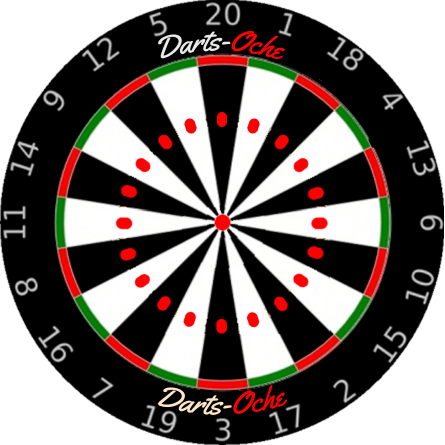
Until recently, I have never come across this strange hybrid dartboard. The Club Board is also known as the Tournament Board! Features oval-shaped treble scoring segments and no outer bullseye, otherwise similar to the London Clock dartboard. This dartboard apparently had no area stronghold but featured in workingmen's clubs (hence its name) rather than any specific town or region. According to Keith Turner in his book 'Darts The Complete Book of the Game', the locals' rules attributed either 50 or 100 to the Bullseye.
I have no further reference to this board or, indeed, who made it. It seems a 180 might have been a little, though.
The name Club or Tournament board is sometimes attributed to a club's second or match dartboard. I.e. one board for practice, the other for matches between rival clubs, pubs or teams.
This dartboard is sadly no longer made.

